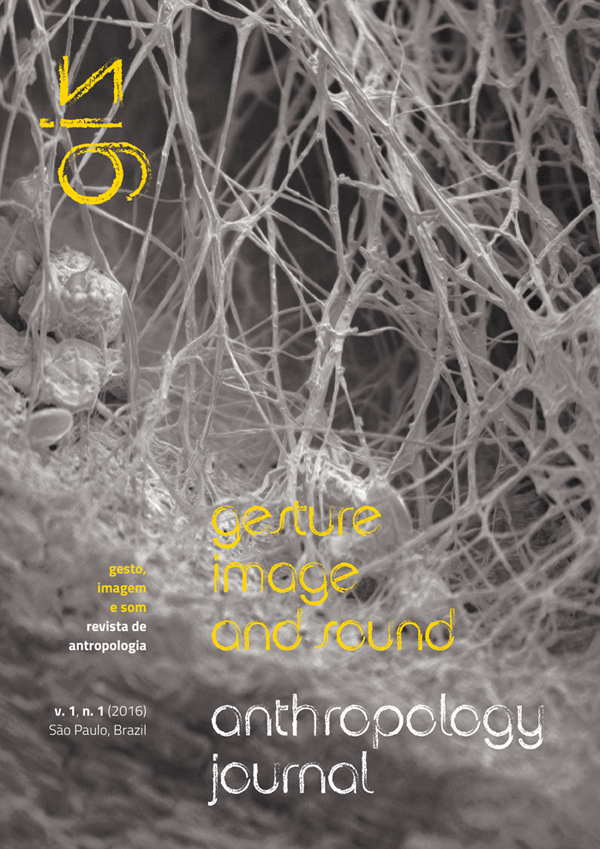Iconography and orality: on objects and the person among the bororo
DOI:
https://doi.org/10.11606/issn.2525-3123.gis.2016.116351Keywords:
creation and transformation of social beings, Bororo, sensory modalities of artefacts, ritual expression of the personAbstract
This article focuses on some sensory modalities – visible, material and sonic – which allow for a greater understanding of the processes through which social beings in indigenous Brazil are created and transformed. David MacDougall has suggested that the study of visible cultural expressions should be considered an aspect of visual anthropology since “the expressive systems of human society… communicate meanings partially or primarily by visual means” (MacDougall 1997, 283). However, I would argue that it is also possible to associate these visible aspects of human communication with other sensorial modalities, such as, for example, sonic effects and even breathing, both of which are essential to any reflection on the transformations taking place in human bodies. In this article, I shall aim to substantiate this argument by recasting the material presented in one of my first publications in the Revista de Antropologia and which concerned the role of certain material objects in the celebration of the Bororo funeral (Caiuby Novaes 1981). Along with birth and naming, among the Bororo death and funerals mark one of the most important social ransformations that occur over the course of a person’s lifetime and certain material objects play a crucial role in bringing these about. In this reworking of my earlier material, I turn my focus on the sensory modalities – visible, material and sonic - through which it is possible to understand the role played by the manufacture and social relations engendered by these objects in the creation and transformation of social beings among the Bororo. I hope that my analysis of the Bororo case will not only illuminate similar ritual processes elsewhere in indigenous lowland South America, but will contribute to the enrichment of anthropological understanding of these transformations more generally. It should be stressed that what is at stake here is not the understanding of these sensory modalities per se, but rather the broad variety of cultural phenomena in which they may be encoded.
Translation: Elizabeth Rahman
Downloads
Downloads
Published
Issue
Section
License
Authors who publish in this journal agree to the following terms:
a. All rights reserved for authors. Journal has right to first publication. Work is simultaneously licensed under Creative Commons Attribution License which permits sharing work with recognition of authorship and initial publication in this journal for non-commercial ends.
b. Authors are authorized to separately make additional contracts for non-exclusive distribution of version of work published in this journal (e. g. publish in institutional repository or as book chapter), with recognition of authorship and initial publication in this journal.







